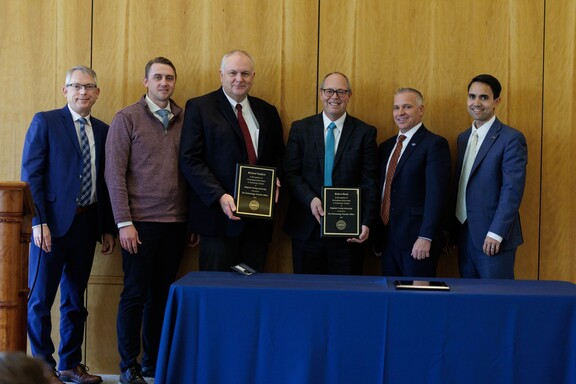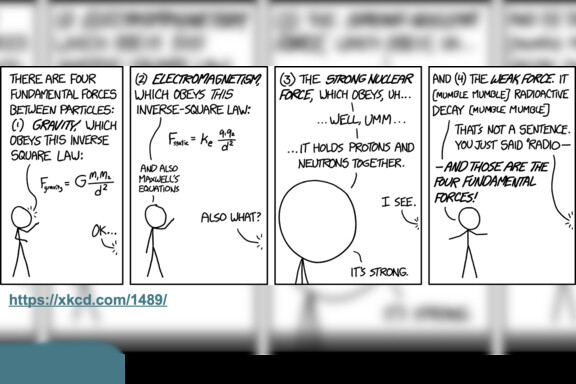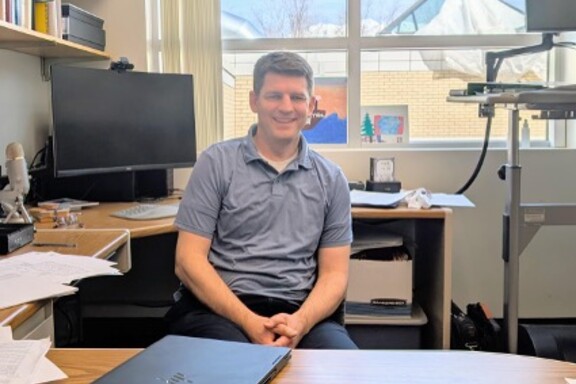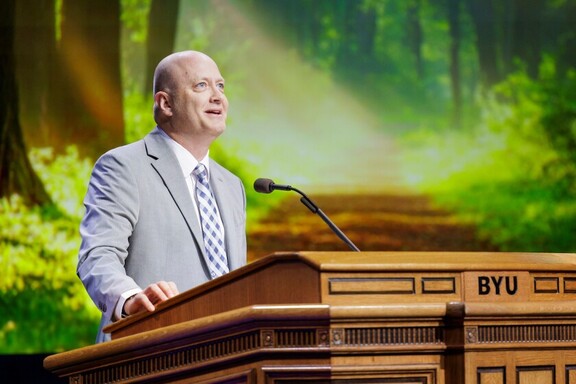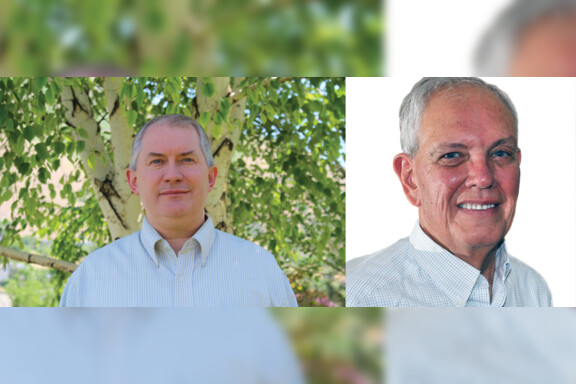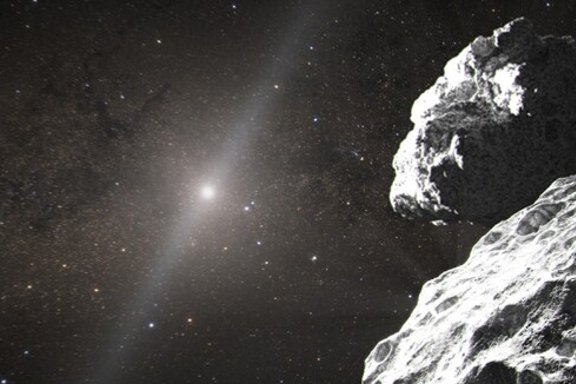 Dr. Gus Hart is the recipient of the 2024 Karl G. Maeser
Dr. Gus Hart is the recipient of the 2024 Karl G. Maeser
Research and Creative Arts Award in recognition of his significant contributions to computational material science. He began his research in the late 90s and has continued in the field until around 2021 when he decided to pivot and begin investigating biophysics. In spite of the dramatic shift in his research interest, Hart remains focused on developments in computational methods. “You'll never catch me doing experiments,” he declared.
Gus Hart was nominated for this prestigious award due to his work in computational material science, which “gained recognition and influence in [his] discipline reaching well beyond local or regional boundaries, such as significant refereed publications, research funding, invited presentations at national or international symposia” (from the Maeser Award Nomination Packet Instructions1). According to Google Scholar (as of May 2025), his publications have been cited 11,623 times, with 6,559 occurring within the last 5 years. He has received funding from the National Science Foundation, DOD-NRL MURI program, Research Corporation, Chan- Zuckerberg Initiative, Kansas City National Security Campus, and others. Hart has given invited presentations in Germany, France, UK, Japan, Mexico, South Africa, and across the United States, with a sabbatical recently completed at Cambridge University in 2021.
Hart attributed most of his success in his field to his knowledge of mathematics. “The real milestones in my career…boiled down to learning new math,” he noted. When asked to give advice to future students seeking similar success, Hart said, “People always say, follow your passion, but I think that's garbage. You become passionate about stuff that you're good at…if you wait around for a passion, you will never get good at anything. It's good to just chase stuff for a while and then if it's not your thing, then pivot.”
As the 2024 recipient of the Karl G. Maeser Research and Creative Arts Award, Professor Hart was recognized for his significant contributions to computational material science and impressive list of speaking engagements. Beyond his academic pursuits, Gus Hart remains dedicated to hobbies such as mountain biking, handball, and guitar. In fact, he recently won the state championship (A division) in handball. Dr. Hart’s extensive research makes him a deserving recipient of this prestigious award, celebrating his exceptional contributions to the field.
Student Authors: Camille Shaw, Martin Clemens, Porter Nelson
Edited by Gus Hart and Brian Anderson
1 https://avp.byu.edu/0000018b-df88-dc7a-a7ab-fffe40bc0001/karl-g-maeser-research-creative-arts-award
News and Events
